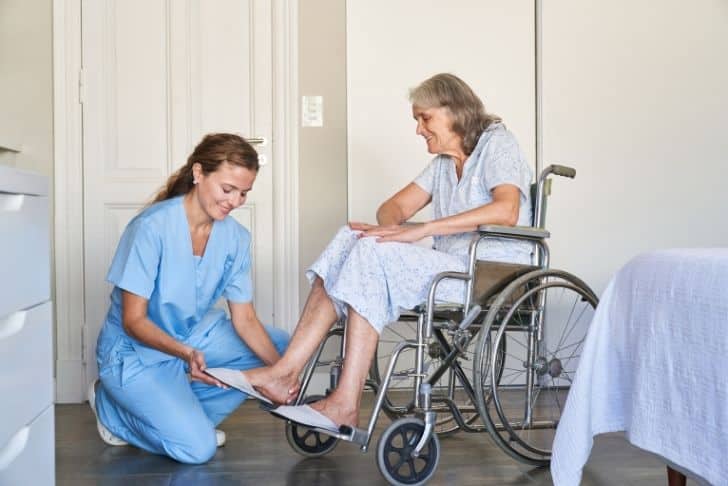Making your way in the world should never be a stressful endeavor due to physical limitations. In this article, “Different Types of mobility devices,” you’ll explore the various mobility devices available today, from wheelchairs to electronic personal assistance mobility devices, each with its own unique advantages. You’ll gain insight into how these devices cater to the specific needs of people with disabilities and make their day-to-day activities easier while shedding light on the laws, regulations, and standards such devices must adhere to. This article is not just illuminating, but it also serves to augment your understanding of the diverse mobility options that exist, which can greatly enhance the quality of life for individuals with disabilities.

Basic Requirements for Mobility Devices
Mobility aids are crucial for many people with disabilities, facilitating their movement and promoting greater independence. Devices such as walkers, wheelchairs, or power-driven equipment fall under this category. But there are certain requirements and rules to consider for both users and establishments when it comes to these aids.
Right of entry for disability related mobility device users
For starters, state and local governments, as well as businesses, are required to permit a person with a disability – who uses a wheelchair or another manually powered mobility aid – into all areas where the public is allowed. This right of entry is protected by the law and is an integral part of ensuring the society is accessible and inclusive to all.
Situations where powered devices may be disallowed
While these rights are universal, there are situations when the use of powered mobility devices may be limited. This happens when safety concerns are present. If it can be demonstrated that a specific type of device cannot be safely used within certain premises, the entry with that device may be denied. However, this exclusion should be the exception, not the rule.
Wheelchairs and Manually Powered Devices
Function and design of wheelchairs
Wheelchairs, designed primarily for those who experience difficulty or inability to walk, are central to mobility aids. They can be manually operated or powered, depending on the user’s physical capabilities and preferences. These devices are carefully designed to ensure safety, comfort, and reliable mobility for the user.
Features of manually powered devices
Manually powered mobility aids, such as walkers, canes, crutches, and braces, are other examples of devices facilitating movement for those with disabilities. These aids, which require physical strength and coordination to operate, come in various models tailored to the individual’s needs.
Examples of manually powered mobility devices
From the basic cane that aids balance to walkers that offer more support, and crutches used for temporary mobility challenges, the choice of device can depend on several factors. The user can select the best fit according to their physical condition, lifestyle, and other personal preferences.
Other Powered Mobility Options
Categories of powered mobility options
On the other hand, powered mobility options are an ideal choice for those who require more assistance. They can include fairly conventional golf carts or innovative electronic personal assistance mobility devices like Segways.
Exploration of specific powered mobility devices such as golf carts and Segways
Golf carts, for instance, are simple, easy to handle, and suitable for varying terrains. They can be a practical choice for those who need to cover longer distances. Segways are also being recognized as mobility devices, known for their maneuverability and easy handling.
The usage of ATVs as mobility aids
All-terrain vehicles, known as ATVs, are also mentioned as being viable powered mobility devices. These are vehicles designed to maneuver a wide variety of terrains, offering even more flexibility and mobility.
Factors to Consider for Mobility Device Use
Determining factors for using powered mobility options
When deciding on using a powered mobility device, multiple factors should be considered. This can include the size, weight, and dimensions of the device, along with its speed capabilities.
Indoor and outdoor facility considerations
Further considerations should be made regarding the type of facilities these devices will be used in. Whether the facility is indoor or outdoor and its square footage, along with existing furniture placement and available storage, must be factored in.
Pedestrian traffic and mobility devices
Pedestrian traffic of a particular location is another consideration. One must ensure the device can be operated safely without causing inconveniences to other pedestrians.
Consideration of the environment in relation to mobility devices
Finally, environmental considerations should also be given due importance. The impact of the mobility aid on the environment as well as any existing land management conditions must also be contemplated.

‘Other Power-Driven Mobility Devices’ in ADA Regulations
Explanation of ‘Other power-driven mobility devices’ in ADA
The Americans with Disabilities Act (ADA) refers to powered mobility options as ‘Other power-driven mobility devices’ (OPDMDs). In the context of the ADA, OPDMDs refer to any device that assists individuals with disabilities to move around and includes devices that are powered by batteries, fuel, or other engines.
Safety requirements for using other power-driven mobility devices
The ADA regulations stress that any safety requirements for operating mobility devices must be grounded in actual risks, rather than on speculation or stereotypes.
Policy considerations for mobility devices usage
After examining all factors, businesses and facilities might set policies that define speed limits, restricted areas, security screening procedures, and device storage facilities.
Asking Someone About Their Mobility Device
Acceptable questions to ask about a person’s mobility device
In situations where a person uses a powered option to enter a business or government facility, it is permissible to ask the person for “credible assurance” that the device is required due to a disability.
Explanation of ‘Credible Assurance’
Credible assurance can come in the form of a valid state-issued disability parking placard, other state-issued proof of disability, or a statement from the user themselves.
Requirement to not inquire about nature or extent of disability
Despite the need for credible assurance, it is important to note that it’s unacceptable to probe into the nature or extent of someone’s disability, even if they are using a mobility aid.

ADA and Mobility Devices: An Overview
Understanding Disability Rights concerning mobility devices
The ADA regulations play a critical role in defining and protecting the rights of individuals who use mobility aids. These rules are designed to ensure the preservation of dignity and equal opportunity for all.
Exploring ADA requirements for power-driven mobility devices
One of the key ADA requirements is that power-driven devices should be permitted entry into public spaces unless there’s a bona fide reason that makes their use unsafe.
Mobility Aids Provided by Establishments
Public accommodations and their requirements to provide mobility devices
Public accommodations, including businesses and government establishments, have certain responsibilities towards people with disabilities, including providing necessary mobility aids.
Legal obligations of businesses regarding mobility devices
Businesses have legal obligations to provide accessible environments for everyone, including those using mobility devices. Any failure in meeting these obligations can result in legal consequences.
Compliance with the ADA: Understanding and Implementing Rules
Deciding which mobility devices can be accommodated in businesses and establishments
Understanding and complying with ADA rules require businesses and institutions to assess their premises and decide on which mobility devices can be accommodated, considering safety requirements and existing conditions.
How to implement ADA’s regulations on mobility devices
Businesses should take active steps in implementing ADA regulations, such as setting policies for mobility devices usage, and ensuring these policies are communicated and adhered to.
Guidelines for businesses to avoid discrimination
To avoid discrimination, businesses should effectively consider and accommodate the needs of individuals with disabilities. This can be realized by facilitating accessible environments and removing any barriers that might hinder mobility.
Advancements in Mobility Devices
Innovation in mobility aids design
As the world moves forward, there are significant advancements happening in the design of mobility aids. Newer designs focus on improving the user’s comfort, safety, and independence.
Technological progress in mobility devices
Similarly, technology has also revolutionized mobility devices. From battery-life improvements to self-navigating features, technological progress is enhancing their functionality in multiple ways.
Future trends in mobility aid development
Looking forward, future trends in mobility aid development seem promising, with many innovative solutions already in the pipeline. The ultimate goal is to deliver higher standards of accessibility and inclusivity for all members of society.
In conclusion, mobility devices are essential enablers for individuals with disabilities. Understanding how to effectively use, provide, and support the usage of such devices is a collective social responsibility, helping to form a society that is not only inclusive and accessible but also humane and considerate.
